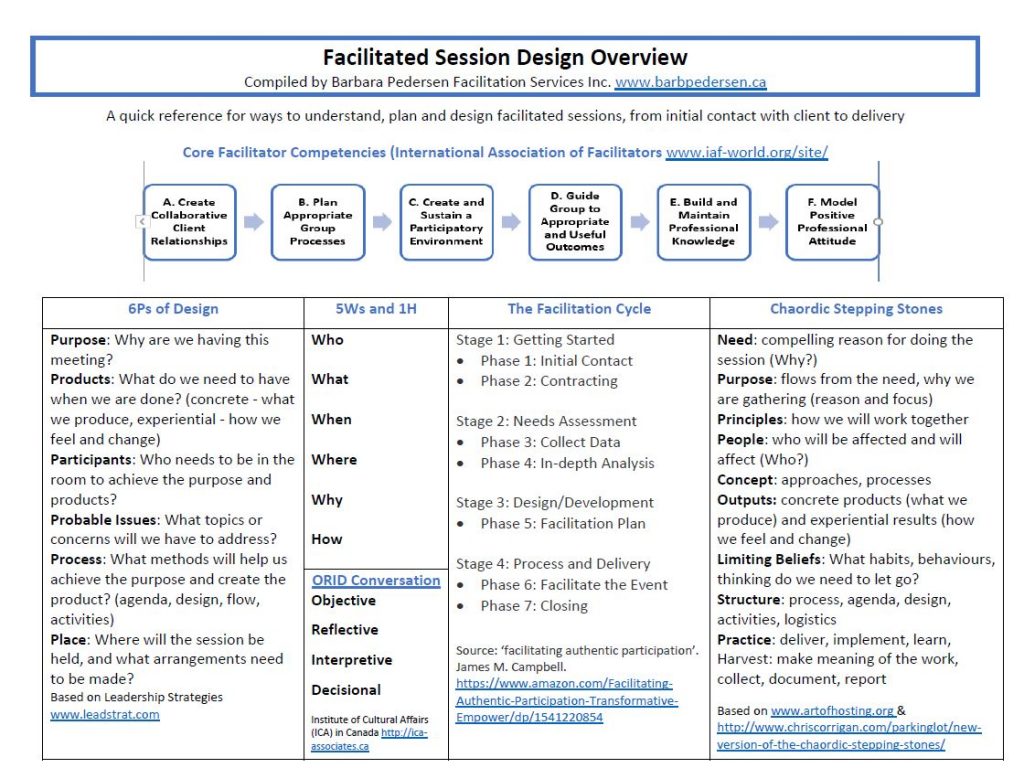Online, in-person, hybrid … oh, my! With COVID-19 continuing to change the way that people gather in meetings, workshops, and sessions, facilitators need to be more diligent than ever about design. Here’s a guide I prepared for myself last year (yes, pre-COVID) and now have “front and centre” in my office as I work within a multitude of places and spaces for facilitation.
How do I use these design ideas?
When I talk with a potential client about a session, the overview reminds me of questions to ask.
When I and the client prepare a contract for my work with them, I use aspects of the overview for accuracy.
I gain the most benefit at the session design stage. I look at each approach and use elements together or separately to best fit the needs of the client.
Sometimes, I show the overview to a client and we use various aspects to collaboratively design.
At times during a facilitated session, I will refer to the overview to ensure I am taking a comprehensive and inclusive approach, that I haven’t overlooked anything, and that my activities will help participants achieve the results they want.
I use the design overview to give me ideas about the report or harvest or decision collection. What will we write, draw, speak and how will we gather it?
After a session, I will use the overview to help with feedback and debrief discussions with the client.
In the overview graphic, I acknowledge the sources which I used or adapted for these design outlines: (International Association of Facilitators, Institute of Cultural Affairs (ICA Canada), ICA Associates, Art of Hosting, Leadership Strategies, Chris Corrigan, James Cameron.

